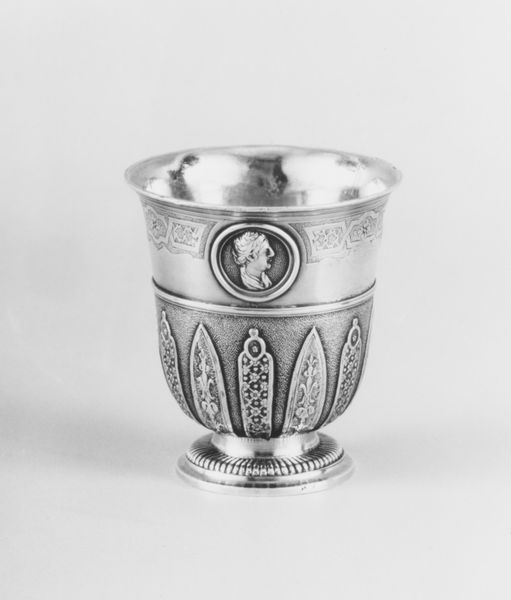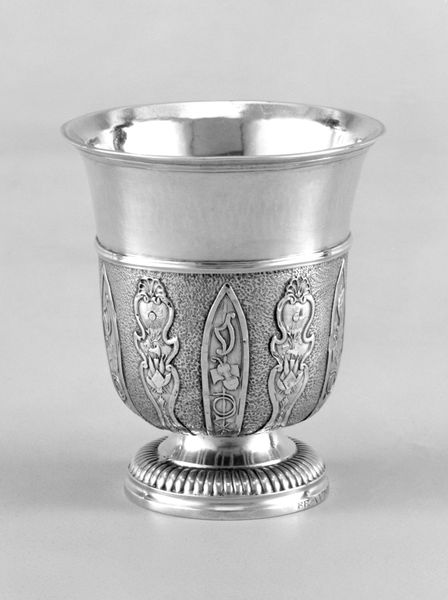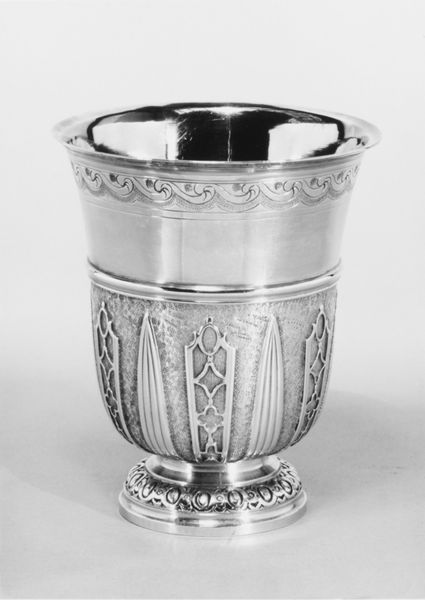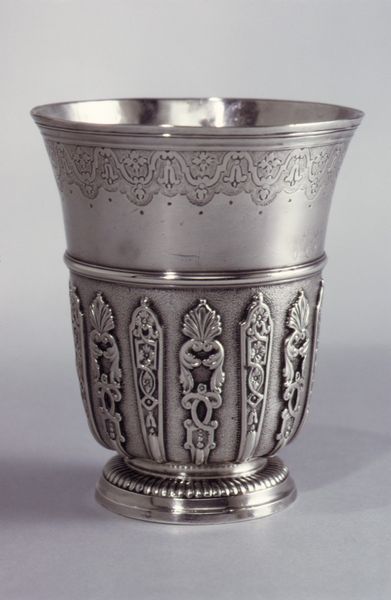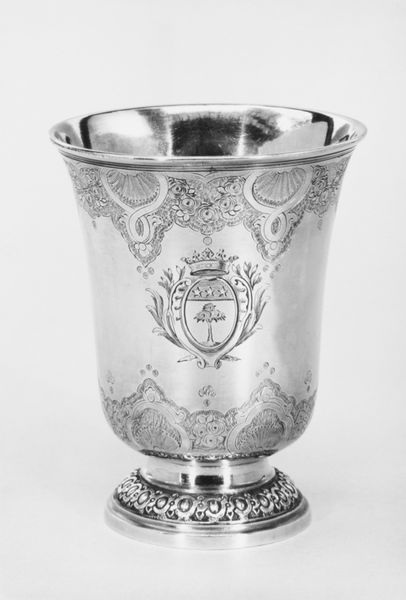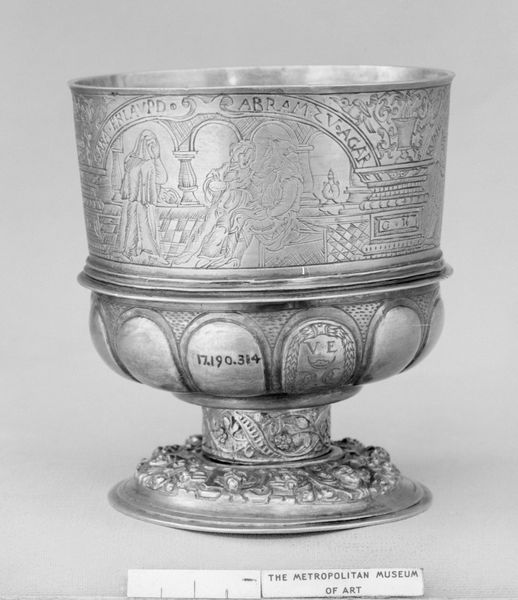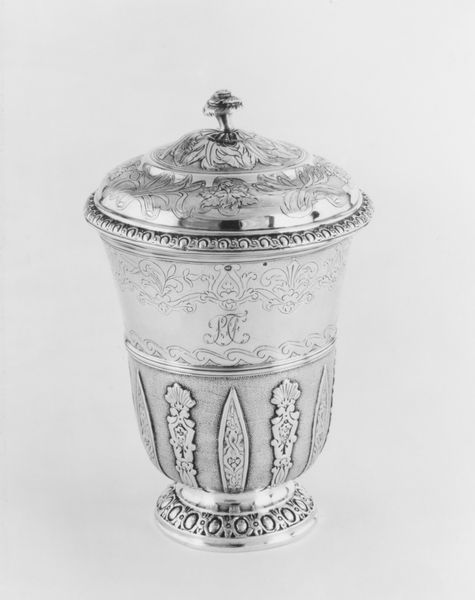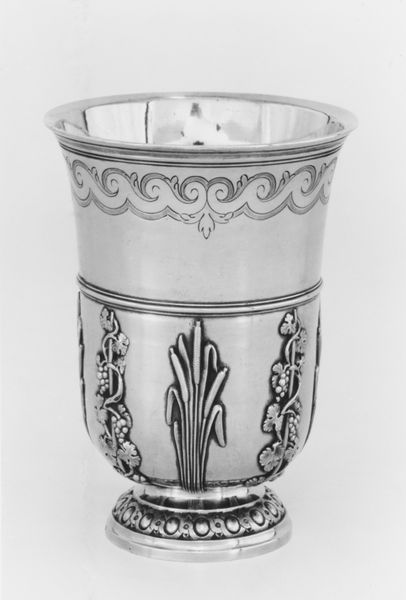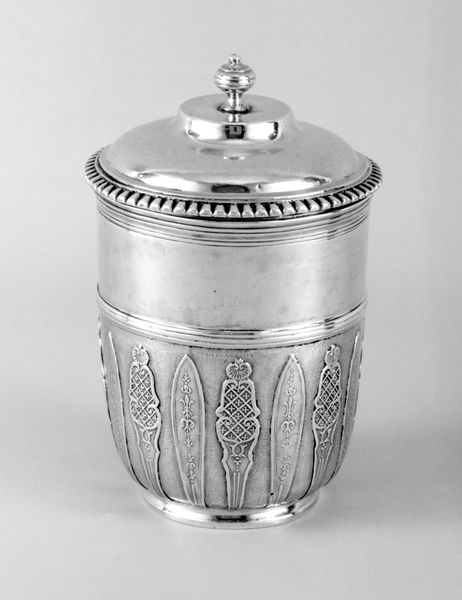
silver, metal, sculpture
#
silver
#
metal
#
sculpture
#
decorative-art
Dimensions: Height: 2 3/4 in. (7 cm)
Copyright: Public Domain
Curator: This is a silver Beaker, made by Claude-Alexis Moulineau in Paris between 1734 and 1735. It’s currently held here at the Metropolitan Museum of Art. Editor: The immediate impression is of incredible delicacy. Despite being rendered in metal, the piece feels incredibly light and refined, with the surface decoration almost like lace. Curator: Indeed. Silverware like this occupied a vital place in the social theatre of 18th-century France. Owning such a piece signaled status and facilitated important social rituals. Think about who would have owned and used this: nobility, wealthy merchants perhaps. Editor: It speaks volumes about access and exclusion. This wasn't an object for everyday use by everyday people; it’s clearly about wealth display and the perpetuation of class structures through ownership and carefully orchestrated performances. Can you talk a bit more about how these power dynamics operated at the time it was made? Curator: Absolutely. The reign of Louis XV was characterized by extravagance at the royal court and within aristocratic circles. Decorative arts, including silverware, thrived under royal patronage. These pieces functioned not just practically but as embodiments of power, taste, and cultural influence, closely monitored and manipulated by figures such as Madame de Pompadour. Editor: What I find fascinating are the different tiers of the chased decoration. At the lip is something approaching the Rocaille style. Moving toward the base we get something symmetrical, organized, which appears as more traditional in approach. The silversmith shows restraint and a deft hand for nuance here, despite the relatively diminutive scale of this piece. Curator: Right, and Moulineau’s workshop benefitted from strict guild regulations. It provided assurances around quality and craft. This piece isn't just about personal adornment. Guild membership also shaped social identities, political access, and professional networks for those artisans involved. Editor: Seeing objects like this prompts contemplation on how they simultaneously embody artistic mastery, socioeconomic inequity, and power. It reveals how much of our cultural inheritance is intrinsically linked with structures that deserve critical reappraisal and, perhaps, dismantling. Curator: Precisely, objects such as this ‘Beaker’ serve as vital lenses to focus attention not just toward artistry and design but towards institutional, societal, and political networks of that time.
Comments
No comments
Be the first to comment and join the conversation on the ultimate creative platform.
